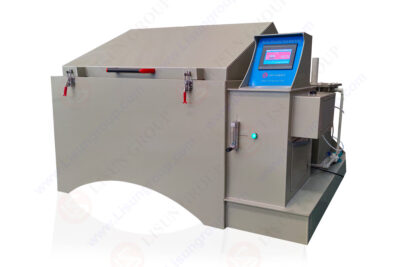
Abstract Flicker testing has become an essential process in assessing the performance of modern lighting systems. With increasing adoption of LED lighting, understanding and evaluating flicker parameters is crucial for ensuring quality and compliance with international standards. This paper delves into the technical aspects of flicker testing, focusing on the LISUN LSRF-3 Lamp Start, Run-Up Time, ...

Abstract Understanding what is light intensity is crucial for industries involved in designing, manufacturing, and testing lighting equipment. Light intensity, a fundamental photometric property, determines how light interacts with an environment or object. This paper focuses on the LISUN LSG-6000 LM-79 Moving Detector Goniophotometer, a sophisticated instrument widely used for light intensity dis...

Flammability testing is a critical step in assessing the safety of materials used in electrical and electronic products. The glow wire test machine, such as the LISUN ZRS-3H Glow-wire Test Apparatus, is a specialized tool designed to simulate the effects of thermal overload and assess the combustibility of plastics. This article delves into the mechanics, applications, and testing procedures of gl...

Corrosion is a persistent issue affecting the durability and performance of components, parts, electronic devices, metal materials, and industrial products. Salt Spray Test Chambers, such as the LISUN YWX/Q-010 Salt Spray Test Chamber, play a pivotal role in assessing the corrosion resistance of materials and coatings under simulated salt spray environments. This article explores the application o...

Abstract A surge voltage generator is a critical tool in evaluating the immunity of various devices to high-energy transient disturbances caused by natural lightning-induced surges or the switching of large capacitive or inductive loads. This article explores the principles and applications of surge voltage generators, highlighting the LISUN SG61000-5 Surge Generator as a benchmark solution for li...

Abstract The waterproof chamber is an essential tool for evaluating the ingress protection (IP) ratings of electronic and electrical products against water intrusion. This paper discusses the importance of waterproof chambers in IP testing, particularly for standards outlined in IEC 60529. Specific attention is given to the IPX1–IPX8 levels, which are widely applied in testing products like LED ...

Abstract Impulse surge generators play a critical role in ensuring the safety and reliability of electronic and electrical systems. This article explores the LISUN SG61000-5 Surge Generator, detailing its applications, features, and specifications. Additionally, it provides insight into lightning surge testing procedures, including its significance in compliance with international standards such a...

Abstract The spectral analyzer is an essential tool in telecommunications, electronics, and signal processing. It is primarily used to investigate the frequency spectrum of electrical signals, identifying amplitude, frequency, and distortion across a broad range. This paper delves into the capabilities and applications of the LISUN SPA-3P6G Spectrum Analyzer, a state-of-the-art device designed for...

Introduction The sulfur dioxide corrosion chamber is a critical piece of equipment in the environmental testing domain. It assesses the resistance of materials and their protective coatings against sulfur dioxide (SO₂)-induced corrosion. This method is particularly important for industries such as automotive, electronics, construction, and coatings manufacturing, where components are exposed to ...